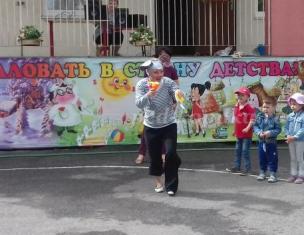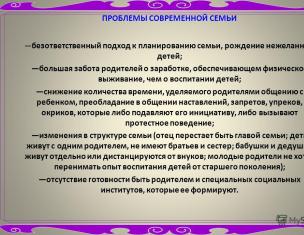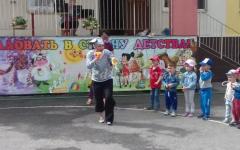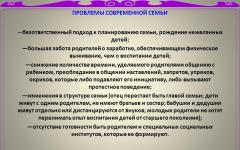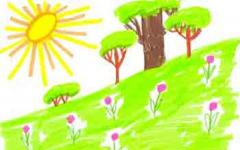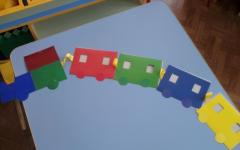Reading time: 9 minutes
Modern parents have access to many didactic aids with which they can develop their children from a very early age. Gyenes logic blocks are very popular - a game with pictures, diagrams and special albums. Classes with this manual help preschoolers in a fun way to get acquainted with the basics of mathematics. Learn what the material is and how to work with it.
What are Gyenes blocks
This is the name of a special didactic manual for mastering mathematics, developed by a well-known Hungarian scientist. Zoltan Gyenes devoted his whole life to this discipline. He tried to make it as understandable and interesting for children as possible. For this, he specially developed the author's Gyenesh system for the early development of mathematics by children.
The game manual is a set of geometric shapes in the amount of 48 pieces. They are represented by elements among which there are no repeating ones. The figures are divided according to the following criteria:
- Color. Blue, red, yellow.
- Size. Small ones, big ones.
- Thickness. Thick, thin.
- Form. Circle, triangle, square, rectangle.
Methodology
Gyenesh logic blocks are designed to teach mathematics in a playful way. Classes with them contribute to the development of memory, attention, imagination, speech. The child develops the ability to classify material, compare, analyze analytical information. The optimal age to start classes is 3-3 years. Working with Gyenes logic blocks will teach the baby:
- Identify the properties of objects, name them, explain what the differences and similarities are, support your reasoning with arguments.
- Think logically.
- It's better to talk.
- Understand what color, thickness, shape and different sizes are.
- Be aware of space.
- Independently solve the problems of the educational and practical plan.
- Persistently go to achieve the goal, cope with difficulties, take the initiative.
- Perform mental operations.
- Develop imagination, creative and intellectual abilities, fantasy, modeling and design skills.
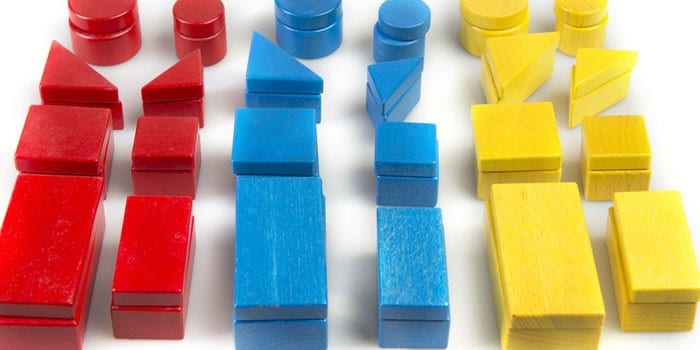
How to work with Gyenes blocks
Classes are held in several stages. Gyenes has developed his methodology taking into account the psychological aspects of young children, so there is no need to be afraid that it will be too complicated for the thinking of a preschooler. There are such stages of development of mathematical abilities:
- Free play. The goal is to teach the baby to solve unfamiliar problems by trial and error, trying different options.
- The kid smoothly switches to the game according to certain rules. In the course of classes, basic information is introduced, for example, “which figures are the same”.
- Discussion, comparison of the content of mathematical games. You need to select different options with related rules, but different game materials.
- Introduction to the content of numbers. It is recommended to use maps, charts, tables.
- The last stage is the longest and is suitable for older preschoolers. It should offer different cards with the definition of rules, which helps to come to specific logical conclusions. Gradually, such concepts as a theorem and an axiom will become familiar to the baby.
Logic blocks
The figurines themselves are the basis of the Gyenes technique. They provide a lot of exciting didactic games for children of different ages. The main purpose of the Gyenes blocks is to teach the child to understand the properties of objects. With their help, he will learn to distinguish and combine objects, to classify them. The presence of pictures and special albums will significantly diversify the number of games that you can offer a preschooler.
Cards
For classes, images are used that contain symbolic information about the properties of the figure. It looks like this:
- The color is indicated by a spot.
- The size is the silhouette of the house. A small one is indicated by a one-story building, a large one by a multi-story building.
- The contours of geometric shapes correspond to the shape.
- Thickness - two images of little men. The first is fat, the second is thin.
- In Gyenes' set there are cards with denial. For example, a multi-storey building crossed out crosswise means that the desired figure is “not big”, that is, small.
Sets of cards can be used not only together with Gyenesh blocks, but also for independent games. Working with them develops logic, the skill of deciphering information by symbols. First, the child should be given the simplest game tasks to get acquainted with the Gyenesh cards, and then gradually complicate them. A set of images can significantly diversify classes, make them much more interesting.

Albums
You will need to purchase several such benefits for each age range. They should be chosen according to the level of development of the child, and not according to how old he is at the moment. Sometimes at the age of 3, the baby has the development of a five-year-old, and sometimes vice versa. The albums contain different games with Gyenesh figurines, diagrams-drawings, according to which they can be folded. You can complicate the tasks yourself, add variety to them, focusing on the reaction of the child.
Gyenes blocks for the little ones
Kids from the age of two can deal with logical figures. Many simple games have been developed for them. Their main goal is to teach the child to distinguish the properties of an object, to group objects according to certain characteristics. Such classes will not only be useful, but also interesting for every kid. Check out some of the most popular game options.
Samples
These are the simplest games for toddlers who are just getting acquainted with the Gyenesh set. Example:
- Lay out the elements of Gyenes in front of the child.
- Let him group them according to different criteria. First selects everything of the same color, then size, and so on.
Gradually the game becomes more difficult. Invite the child to sort the blocks according to two or more features. For example:
- Choose yellow rectangular blocks and blue square ones.
- Get all flat figures of the same size.
- Choose thin round blocks.
- Sort all the blue triangular shapes.
Construction
This creative game is adored by all children without exception. It is very simple, but fascinating. The child is invited to put together different figures from the elements of Gyenesh, first according to the schemes, and then without them, gradually complicating the task. Examples of objects you can ask to construct:
- house;
- table;
- house with windows;
- herringbone;
- shop;
- stool;
- sofa;
- chair;
- steps;
- armchair;
- machine.
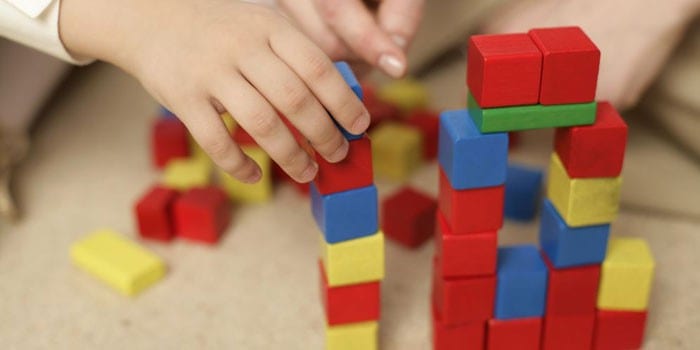
Continue row
The game is aimed at ensuring that the child has a knowledge of geometric shapes, size, thickness, color. Thanks to her, he will learn to find patterns. Task options:
- Lay out the elements of Gyenes on the table in front of the baby so that each next one differs from the previous one in one way. The child continues this row independently.
- Lay out a chain of Gyenesh figures so that there are no objects that are identical in two respects. Invite the child to continue this row.
- Lay out the figures of Gyenes in front of the baby in color: red, yellow, blue. He will continue the series, alternating the shades in the given sequence.
feed the animals
Put some of your favorite toys in front of your baby. Have him feed each pair of "cookies" (blocks). Offer some conditions, for example, the bear cub should be given only red food, and the kitten - square. This game resembles selections, but children perceive it much better. It is rare for a baby to refuse to feed their pets.
Games with Gyenes blocks for the senior group
When the child grows up, exercises for kids, he will be able to click like seeds, and the tasks will have to be complicated. The Gyenes method for preschoolers is designed for kids 5-6 years old. The exercises are more complex, not only the cubes themselves are actively used, but also cards, game albums. The tasks are aimed at developing logical thinking in an adult child, the ability to explain the decision made. Explore a few example games, based on which you can come up with a lot of exercises.
Search
Give the child any Gyenes figurine or offer to choose their own. Then he will get out of the total mass of blocks all those that coincide with the first one in one given property. When he has mastered the game well, make it harder. Let the kid pick up blocks that have two identical properties with the one taken initially. Then you can make the game even harder. The child must select those blocks that do not have a single adjacent property to the first one.
Dominoes
This game is suitable even for several kids. Rules:
- Each player receives an equal number of blocks. The order of participants is determined.
- The first makes a move with any piece.
- The second one places a block that has one property that matches.
- If there is no suitable piece, the participant skips the move.
- The first player to lay out all their blocks wins.
- The game can be made more difficult by changing the rules about the properties of the laid out figures. For example, you need to respond with a block that has two similar signs, etc.
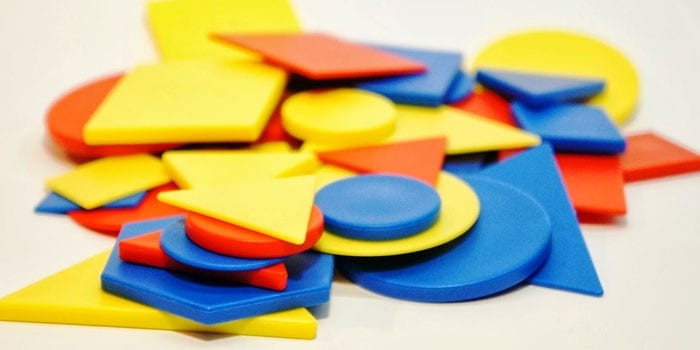
Find the extra
The following game will help children learn how to group three-dimensional geometric shapes according to various criteria. Rules:
- Lay out three figures in front of the child. One of them should not have a single property in common with the others.
- Let the child figure out which block is superfluous and explain why, how he came to this conclusion.
- Make the task harder. Lay out 6 blocks. The kid must remove two extra ones.
Find a couple
This game will appeal to kids who have already mastered all the simple tasks well. Rules:
- Lay out several figures in a row in front of the child.
- Offer to choose a steam room for each according to a certain property.
- Make the task harder. Let the baby try to match not one, but two or three properties.
- You can initially take, for example, 10 paired elements. Put them in a bag. Let the child line up pairs by laying out the Gyenesh figures in two horizontal rows.
Artists
For the game you will need several large sheets of colored cardboard. They serve as sketches for paintings. To compose the composition, additional cardboard parts are needed. The game teaches to analyze the shape of objects, compare them, develops creative and artistic abilities. Rules:
- According to the sketches, the kids should “paint” a picture.
- They choose their own preparation. It shows schematically where which blocks should be located. Thin ones will only be outlined, and thick ones will be completely painted over.
- Let the children pick up the missing blocks and parts cut out of cardboard in the correct places of the “sketch”.
Shop
For this task, you need cards with the image of objects that will serve as goods, and logical elements. The game "Shop" develops memory, the ability to reason, justify your choice, identify and abstract properties. Rules:
- A preschooler comes to the store, in the assortment of which there are a lot of goods-cards. He has three figures that perform the function of money. Each item can be purchased for one item.
- The kid needs to buy the object that has at least one property that matches the money figure.
- Gradually, you can complicate the game by suggesting new rules.
Let's decorate the Christmas tree
The next game contributes to the development of skills in ordinal counting, reading a diagram. For her, you will need an image of a Christmas tree and 15 cards with symbols, blocks. Rules:
- The Christmas tree should be decorated with beads in five rows. Each will have three beads.
- The number on the card is the serial number of the thread position from top to bottom. The circle painted on it shows which bead should go in the account, and below it is indicated which element will depict it.
- Let the kid hang the first row of beads, and then all the lower ones, clearly following the pattern on the card.


